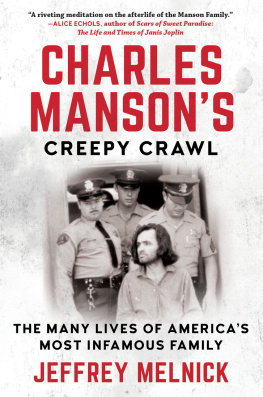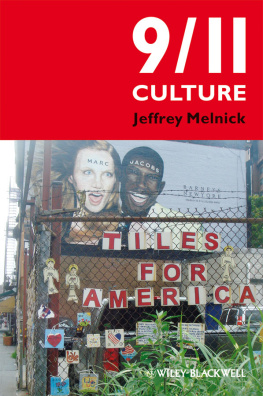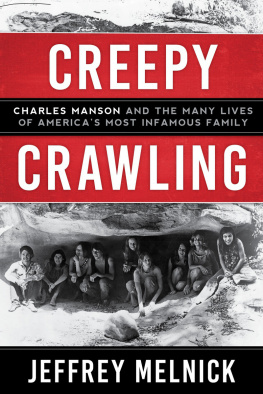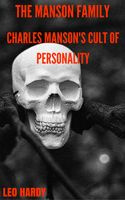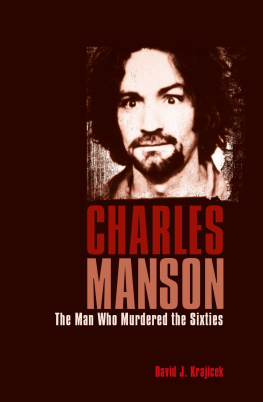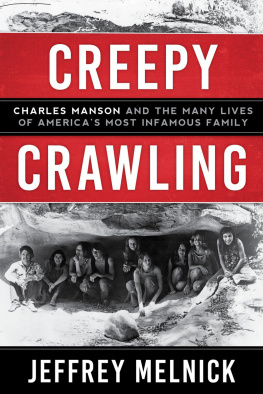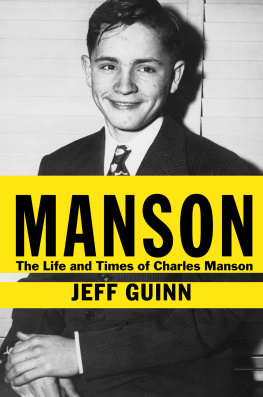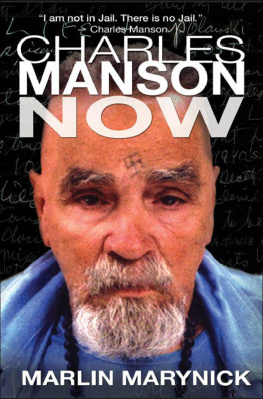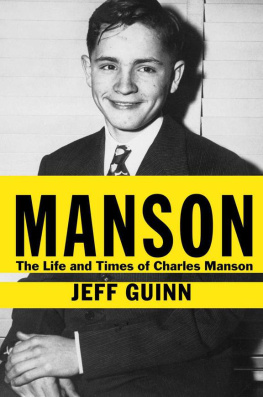
Praise for Charles Mansons Creepy Crawl: The Many Lives of Americas Most Infamous Family
Its a fascinating book, forcing us to recognize something we might rather not think about: how and why we have kept Charles Manson and his followers alive in our minds, rather than consigning them to the dustbin of history.
Booklist
A disturbing account of the many ways Charles Manson pervades American culture.
Publishers Weekly
Jeffrey Melnick offers a sobering corrective to the apocalyptic hysteria surrounding the hippie horrors of Mansons Family. This rigorous recontextualization of time and place forces us to understand the killings in a new way.
Barney Hoskins, author of Hotel California
Why is Charles Manson, the assassin of flower power, so impossible to bury? The answer according to Jeffrey Melnick is that the demon and his runaways carved their signatures into the very heart of a complicit counterculture. Riveting and unsettling, this book recalls another chilling classic: Thomas De Quincys On Murder Considered as One of the Fine Arts.
Mike Davis, author of City of Quartz: Excavating the Future in Los Angeles
[Charles Mansons Creepy Crawl] is a riveting meditation on the afterlife of the Manson Family. Jeffrey Melnick reveals how deeply the Family burrowed its way into American culture, often in ways that undermined collectivism and helped to shape the backlash against the sixties.
Alice Echols, author of Scars of Sweet Paradise: The Life and Times of Janis Joplin
Melnick retells the Manson saga not as true-crime investigation or psychological thriller, but as kaleidoscopic cultural history, unpacking how an indelibly American horror story has echoed down the years in our popular consciousness via books, films, and especially music. Its a fascinating bookand as unstable patriarchal white dudes of varying stripes continue to shape the national narrative, an inescapably timely one.
Will Hermes, author of Love Goes to Buildings on Fire: Five Years In New York That Changed Music Forever
Jeffrey Melnicks [Charles Mansons Creepy Crawl] is a compulsively-readable guide to the American fascination with the Manson Family. Expertly weaving psychology, sociology, history, and pop culture, Melnicks work covers everything from the Familys Freudian roots to its continued commodification, from Joan Didion to Nicki Minaj. We know the Manson Murders have been part of the cultural landscape for the past fifty years, but Melnick shows us why. The book is a must-read not only for those fascinated by the Manson Family, but anyone fascinated by America.
Allison Umminger, author of the highly acclaimed Manson novel American Girls
[Charles Mansons Creepy Crawl is] a contentious, revisionist, often obnoxious, but thorough and undeniably important cultural-historical study of the eras major American cult leader.
Devin McKinney, author of Magic Circles: The Beatles in Dream and History

For my mother, who always encouraged me to read all the books I could reacheven the scary ones.
Other books by the author:
9/11 Culture: America Under Construction (Wiley-Blackwell, 2009; Arabic translation by Azza Alkhamissy, 2010)
Immigration and American Popular Culture: An Introduction, with Rachel Rubin (New York University Press, 2006)
Race and the Modern Artist, eds. Josef Jarab, Jeffrey Melnick and Heather Hathaway (Oxford University Press, 2003)
American Popular Music: New Approaches to the Twentieth Century, eds. Jeffrey Melnick and Rachel Rubin (University of Massachusetts Press, 2001)
Black-Jewish Relations on Trial: Leo Frank and Jim Conley in the New South (University Press of Mississippi, 2000)
A Right to Sing the Blues: African Americans, Jews, and American Popular Song (Harvard University Press, 1999)

Copyright 2018 by Jeffrey Melnick
First paperback edition, 2019
All rights reserved. No part of this book may be reproduced in any manner without the express written consent of the publisher, except in the case of brief excerpts in critical reviews or articles. All inquiries should be addressed to Arcade Publishing, 307 West 36th Street, 11th Floor, New York, NY 10018.
Arcade Publishing books may be purchased in bulk at special discounts for sales promotion, corporate gifts, fund-raising, or educational purposes. Special editions can also be created to specifications. For details, contact the Special Sales Department, Arcade Publishing, 307 West 36th Street, 11th Floor, New York, NY 10018 or .
Arcade Publishing is a registered trademark of Skyhorse Publishing, Inc., a Delaware corporation.
Visit our website at www.arcadepub.com.
10 9 8 7 6 5 4 3 2 1
Library of Congress Cataloging-in-Publication Data is available on file.
Cover design by Erin Seaward-Hiatt
Cover photo: Michael Ochs Archives/Getty Images
Print ISBN: 978-1-94892-476-4
Ebook ISBN: 978-1-94892-477-1
Printed in the United States of America
Table of Contents
Introduction
Creepy Crawling through the Sixties: Charles Manson and History
T he year 2019 will mark the fiftieth anniversary of the Tate-LaBianca murders that made Charles Manson a household name, and the man and his Family are still everywhere. In 2016 they were on network television with the return of Season Two of David Duchovnys Aquarius to NBCs schedule. They are at the center of Emma Clines debut novel, The Girls, which has been prominently reviewed all over the mainstream press, hitting the New York Times Best Seller list within two weeks of publication. They are in the news in the developing story of the most recent parole hearing of Family member Leslie Van Houten, a dear friend of filmmaker John Waters.
During 2016 and early 2017, Mansons presenceat once frightful and comictook on added resonance in the context of Donald Trumps campaign for, and ascension to, the presidency of the United States. Given that Manson has served for decades as a kind of shorthand for charismatic pathology, it would have been hard to resist Manson/Trump juxtapositions. So, during the campaign multiple Internet rumors about Mansons putative endorsement of the candidate circulated; more than a few compared Trump to the cult leader with respect to the power he held over his followers. In the early days of 2017, when Manson was rushed to the hospital for an undisclosed health emergency, Andy Borowitz (at the New Yorker) and other comic writers suggested that now the president-elect would have to take the cult leaders name off his shortlist to fill the Supreme Court seat of Antonin Scalia that had been denied Merrick Garland by Republican obstructionism. Others noted similarly that when they saw Mansons name trending on social media after his health scare they at first assumed it was because Trump must have named him to a cabinet position. Most efficient of all was a widely circulated GIF that simply put video footage of Trump and Manson side by side so that viewers could observe and draw conclusions from the similarities in their exaggerated facial expressions, which often take the form of non-verbal insults.
Next page
